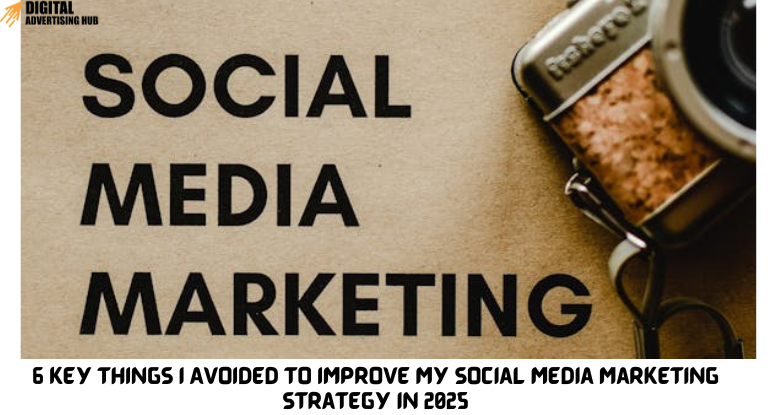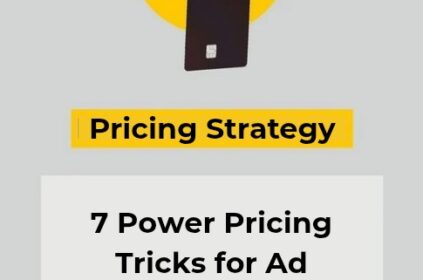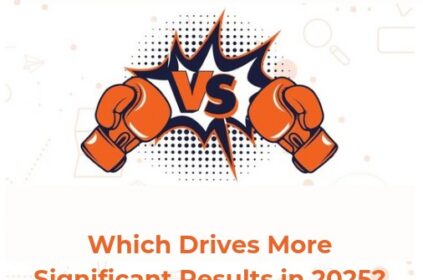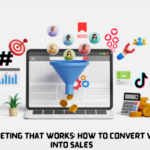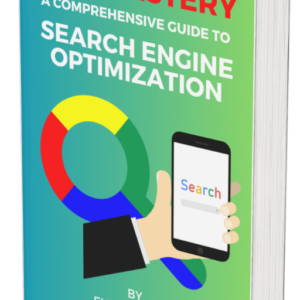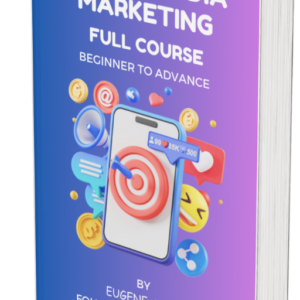If you’ve ever felt like your social media marketing strategy isn’t delivering the results you expect—low engagement, poor conversions, or just a lack of sales—you’re not alone. I’ve been there.
In 2024, I poured time, effort, and even money into growing my presence on Instagram, Facebook, LinkedIn, TikTok, and Twitter, only to realize that some of the things I was doing were actually holding me back.
The truth is, social media marketing isn’t just about posting daily, using the right hashtags, or even spending more on ads. Sometimes, it’s what you stop doing that leads to the biggest improvements.
In 2025, I made key shifts in my strategy by avoiding certain mistakes, and the results were undeniable—higher engagement, better conversions, and, most importantly, more sales.
Let me share six key things I stopped doing that transformed my social media marketing game this year. If you’re struggling to get results, chances are you might be making one (or more) of these mistakes too.
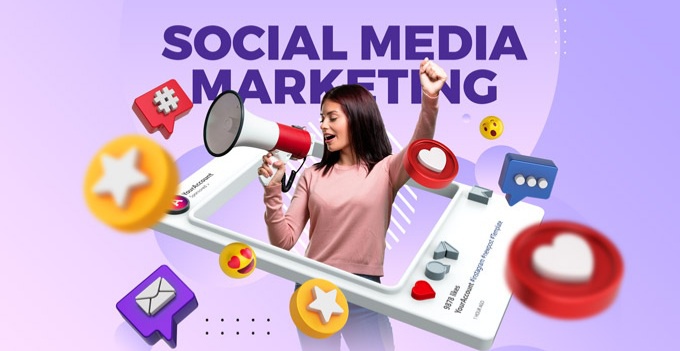
#1. I Stopped Obsessing Over Vanity Metrics and Focused on Real Engagement
I used to get caught up in the numbers—follower count, likes, and even reach. It felt good to see big numbers, but here’s the harsh truth: vanity metrics don’t pay the bills.
The turning point came when I realized that high engagement doesn’t always mean high conversions. Just because a post gets 10,000 likes doesn’t mean those people are buying. I had to shift my focus to the metrics that actually drive revenue, like:
1. Saves and shares – People saving my posts meant they found them valuable.
2. Comments and DMs – The more real conversations I had, the more leads I generated.
3. Click-through rate (CTR) and conversions – Because sales are the real goal.
Once I stopped chasing numbers and started prioritizing meaningful interactions, my engagement became more authentic, and I started attracting genuinely interested followers—potential customers, not just spectators.
#2. I Stopped Posting Without a Clear Strategy and Started Creating With Purpose
In the past, I thought that the key social media marketing strategy was posting every day. I would wake up, think of something random to post, slap on a few hashtags, and hit “publish.” The result? Minimal engagement, no conversions, and a lot of wasted effort.
I learned the hard way that posting for the sake of posting is useless if there’s no clear strategy behind it. My content lacked direction, and my audience had no reason to stay engaged. So, in 2025, I made a crucial shift—I stopped posting just to fill up my feed and started creating with purpose.
Here’s what changed:
1. I Started Planning Content Around Business Goals
Instead of randomly posting, I mapped out my content around clear objectives. For example:
- If my goal was to increase brand awareness, I created storytelling posts that introduced my business in a relatable way.
- If I wanted to generate leads, I posted content that educated my audience on their pain points and offered solutions (with a clear CTA).
- If I needed more conversions, I shared testimonials, case studies, and behind-the-scenes insights that built trust.
This shift helped me move away from random posting and towards a content plan that actually drove sales.
2. I Focused on Content That My Audience Actually Wanted
Another big mistake I made was creating content based on what I liked, instead of what my audience needed. This was a major disconnect.
I started paying attention to my audience’s real concerns by:
- Reading and responding to their DMs and comments to understand their challenges.
- Analyzing my top-performing posts to see what resonated most.
- Running polls and Q&A sessions to hear directly from them.
By aligning my content with what my audience actually cared about, I saw a dramatic increase in engagement, shares, and even inbound leads. Discover the 7 Essential Content Marketing Frameworks to Boost Lead Generation.
3. I Used a Content Mix Instead of Just One Type of Post
Before, my content was repetitive—I relied too much on just promotional posts or educational carousels. But I learned that variety keeps people engaged. So, I created a mix of:
- Educational content (how-to guides, quick tips, industry insights)
- Engaging content (polls, Q&As, relatable memes)
- Social proof (testimonials, case studies, user-generated content)
- Sales-focused content (offers, product demos, call-to-action posts)
This strategy made my content more dynamic and effective, leading to better results without requiring me to post every single day. Most importantly, learn about the 7 Costly Content Marketing Mistakes and How to Fix Them Easily to improve your social media marketing strategy, as both work hand in hand.
#3. I Stopped Ignoring Community Engagement and Started Building Relationships

For the longest time, I treated social media as a one-way street—I would post my content, wait for the likes and comments to roll in, and move on to the next post. Big mistake.
I assumed that as long as my content was good, people would naturally engage with it. But the reality? Social media is built on relationships. If you don’t actively engage with your audience, your content gets buried, and your followers lose interest.
So, in 2025, I made a conscious shift—I stopped just “posting” and started engaging. This change skyrocketed my reach, boosted my conversions, and turned casual followers into loyal customers.
How I Changed My Engagement Strategy
1. I Started Responding to Every Comment and DM
It sounds simple, but before, I would ignore or give half-hearted responses to comments and messages. That changed when I realized that real business opportunities come from conversations.
Now, I make it a priority to:
- Reply to every comment (not just with emojis, but with meaningful responses).
- Follow up on DM inquiries with helpful answers instead of just dropping a link.
- Start conversations first, instead of waiting for engagement to happen.
The more I engaged, the more people saw my content, and the more sales I made.
2. I Engaged With My Audience Outside My Own Content
I stopped waiting for people to come to me. Instead, I became proactive in starting conversations. I began:
- Commenting on my followers’ posts (not just big influencers, but my actual audience).
- Joining relevant discussions in LinkedIn and Facebook groups related to my niche.
- Replying to trending tweets and TikTok discussions to get visibility.
This put my brand in front of more people organically without spending extra on ads.
3. I Encouraged UGC (User-Generated Content)
Before, I was focused on creating all my own content, but then I realized—my customers and followers could create content for me.
By encouraging them to tag me in their posts, share their experiences, and use branded hashtags, I started getting free, authentic content that boosted my credibility and reach.
The Result? More Sales, More Trust, More Reach
Once I stopped treating social media as a broadcast platform and started treating it like a community, everything changed. More people started engaging with my content, recommending my brand, and ultimately, patronizing me. Perhaps, you can upgrade your social media marketing strategy with this straightforward resource material: Social Media Marketing Full Course
#4. I Stopped Over-Relying on AI and Started Using It the Right Way

AI tools have taken over social media marketing in 2025. From content creation to automated replies, it’s easy to let AI run everything. But I made a critical mistake—I relied too much on AI without adding a human touch.
At first, it seemed like a game-changer. AI wrote my captions, generated video scripts, and even replied to comments. But over time, I noticed a problem—my engagement dropped, my audience felt disconnected, and my content lacked personality.
So, I had to rethink my approach. I didn’t abandon AI, but I learned how to use it effectively—without losing my authenticity.
Where I Went Wrong With AI
1. AI-Generated Captions Felt Generic
AI can craft social media captions in seconds, but most of the time, they sound bland, robotic, or overly formal—far from the engaging, relatable tone that actually converts.
I realized that AI should be a tool, not a replacement for human creativity. Now, I use AI for ideas and drafts, but I always rewrite captions in my own voice.
2. Automated Responses Killed Engagement
At one point, I set up AI chatbots to respond to comments and DMs. Big mistake. People quickly caught on that they weren’t talking to a real person, and my engagement suffered.
I switched back to personally responding to key interactions and only using AI to handle FAQs or guide customers to the right resources. This simple change rebuilt trust and improved my conversions.
3. AI-Generated Images and Videos Lacked Personality
AI can now create stunning visuals, but I found that they often look too polished or unnatural. My audience engaged more with real, behind-the-scenes content than with AI-generated graphics.
Now, I mix AI visuals with authentic photos, live videos, and real user-generated content. The result? Higher engagement and a stronger brand connection.
How I Use AI the Right Way Now
Instead of letting AI take over, I use it as an assistant to:
- Brainstorm content ideas (but I add my own experience and insights).
- Analyze trends to see what my audience is talking about.
- Optimize posting schedules based on engagement patterns.
- Speed up research (but I fact-check everything before posting).
The key lesson? AI should enhance your social media strategy—not replace your human connection. Discover how to use AI effectively.
#5. Avoiding One-Size-Fits-All Content Across Platforms
One of the biggest mistakes I made in my social media marketing strategy was posting the same content across all platforms without customization. I assumed that if a post performed well on Instagram, it would automatically work on LinkedIn, TikTok, and Facebook. But that wasn’t the case.
Each platform has its own unique audience, content format, and engagement style. When I started tailoring my content to fit each platform’s strengths, my engagement, conversions, and overall results improved drastically.
Where I Went Wrong with Cross-Platform Content
#1. Treating All Social Media Platforms the Same
At first, I would create one post and copy-paste it everywhere—same caption, same image, same format. But what works on TikTok (short, entertaining videos) doesn’t necessarily work on LinkedIn (thought leadership content).
My mistake: I wasn’t adapting my message to suit the platform and its audience.
#2. Ignoring Platform-Specific Features
I used to post static images on TikTok and long captions on Twitter—two things that don’t really work on those platforms. Each social media channel has unique features that encourage engagement. Ignoring them meant I was missing out on potential reach and interaction.
For example:
- Instagram thrives on visually appealing Reels, Stories, and carousel posts.
- LinkedIn favors professional insights, long-form posts, and engaging conversations.
- TikTok is all about short, engaging, and trend-driven video content.
- Facebook values community engagement, discussions, and detailed posts.
- Twitter (now X) works best with concise, to-the-point messages and viral discussions.
#3. Failing to Optimize for Each Audience
I noticed that my LinkedIn audience preferred professional, insightful content, while my Instagram followers engaged more with behind-the-scenes content and interactive Stories. When I posted the same thing everywhere, it didn’t resonate as well as it could have.
Every platform attracts a different audience with different expectations. The content that gets shares and saves on Instagram might not even get likes on LinkedIn.
How I Fixed This and Optimized Content for Each Platform
- I stopped copying and pasting content and started creating platform-specific variations of my posts.
- I researched platform trends to understand what content performs best.
- I repurposed content strategically—turning long-form LinkedIn posts into short Twitter threads, Instagram Reels, or TikTok videos.
- I analyzed engagement metrics on each platform to see what my audience responded to the most.
- I focused on delivering content that fits each platform’s unique culture while keeping my messaging consistent.
By avoiding a one-size-fits-all approach, my engagement skyrocketed, my audience felt more connected, and my content finally started driving real business results.
#6. Avoiding Content Without a Clear CTA (Call to Action)

For a long time, I was creating engaging and valuable content, but I kept wondering why it wasn’t leading to more conversions, leads, or even meaningful interactions. Then I realized the problem: I wasn’t telling my audience what to do next.
A well-crafted social media post without a clear CTA is like a great sales pitch that never asks for the sale. It might generate awareness, but it won’t drive action.
Where I Went Wrong with My CTAs
#1. Assuming People Knew What to Do Next
I thought my audience would naturally take action if they liked my content. If I posted an Instagram Reel about social media strategy, I assumed people would check my bio for more details. But they didn’t—because I never told them to!
Social media users are constantly scrolling, so if you don’t direct them toward the next step, they won’t take it.
#2. Using Weak or Vague CTAs
In the past, I’d end my posts with generic phrases like “Hope this helps!” or “Let me know what you think.” While these sound friendly, they don’t push the reader to take meaningful action.
For example, instead of saying:
“Check out my latest blog post on social media marketing strategy.”
I started saying: “Want to grow your brand with social media? Click the link in my bio for my full strategy breakdown.”
This small shift increased my link clicks, engagement, and even DMs from people interested in my content.
#3. Not Aligning CTAs with My Goals
Sometimes, my CTA didn’t match what I actually wanted to achieve. For instance, I once created a high-value post to promote a free webinar but ended it with “Follow for more tips.” That was a missed opportunity!
Instead, I should have said: “Join my free webinar where I’ll break this down step by step! Click the link to save your spot.”
How I Fixed My CTA Mistakes and Boosted Engagement
#1. I made every post serve a purpose—whether it was driving sales, generating leads, or increasing engagement.
#2. I used action-oriented CTAs that told my audience exactly what to do (e.g., “Download now,” “Sign up today,” “DM me for details”).
#3. I created urgency with phrases like “Limited spots available” or “Offer ends soon.” Discover 12 Proven Tips to Create Urgency and Scarcity in Email Marketing to Drive Sales and Traffic.
#4. I tested different CTA styles to see which ones my audience responded to best.
#5. I placed my CTAs strategically—in captions, on images, and even in the first comment to maximize visibility.
Once I started adding clear, compelling CTAs, I noticed an instant shift—higher click-through rates, more DMs, and more conversions.
How These Changes Transformed My Social Media Marketing in 2025
When I made these shifts—eliminating ineffective AI use, avoiding trend-chasing without strategy, ditching low-quality engagement tactics, personalizing content per platform, and incorporating clear CTAs—I saw a dramatic transformation in my social media marketing results.
#1. Increased Engagement and Authentic Interactions
Before, my posts would get decent reach, but the engagement felt shallow—random likes and generic comments that didn’t lead anywhere. Once I optimized my social media marketing strategy, I saw a rise in genuine interactions, including thoughtful comments, direct messages, and even email sign-ups from social media. People started seeing me as an expert rather than just another content creator.
#2. More Leads and Sales Without Extra Ad Spend
One of the biggest wins was how these improvements directly impacted my sales and lead generation. By using targeted CTAs and ensuring every piece of content had a purpose, I turned my audience into paying customers and loyal followers. I didn’t even have to increase my ad spend—I simply made my content work smarter.
#3. Stronger Brand Positioning Across Multiple Platforms
Previously, my presence on Instagram, LinkedIn, Facebook, TikTok, and Twitter felt scattered. Each platform had the same content repurposed without much thought. After tailoring my content approach for each platform, I built stronger communities where my audience engaged differently but meaningfully on each channel.
#4. A Content Strategy That Feels Sustainable and Scalable
Burnout used to be a major issue. I felt the pressure to constantly churn out content that barely moved the needle. Now, I create content with a clear goal in mind, leverage AI wisely, and focus on quality over quantity. This has made my strategy more sustainable and scalable without draining my creativity.
Conclusion
Social media marketing is not just about posting frequently—it’s about posting with purpose. The key to growth in 2025 is avoiding shortcuts, leveraging AI strategically, prioritizing engagement that matters, and ensuring that every post drives an action.
By making these changes, I’ve turned my social media marketing into a powerful revenue-generating machine. If you’ve been struggling with low engagement, poor conversions, or wasted efforts, it’s time to rethink your strategy. Start implementing these shifts today, and watch your social media marketing thrive!

